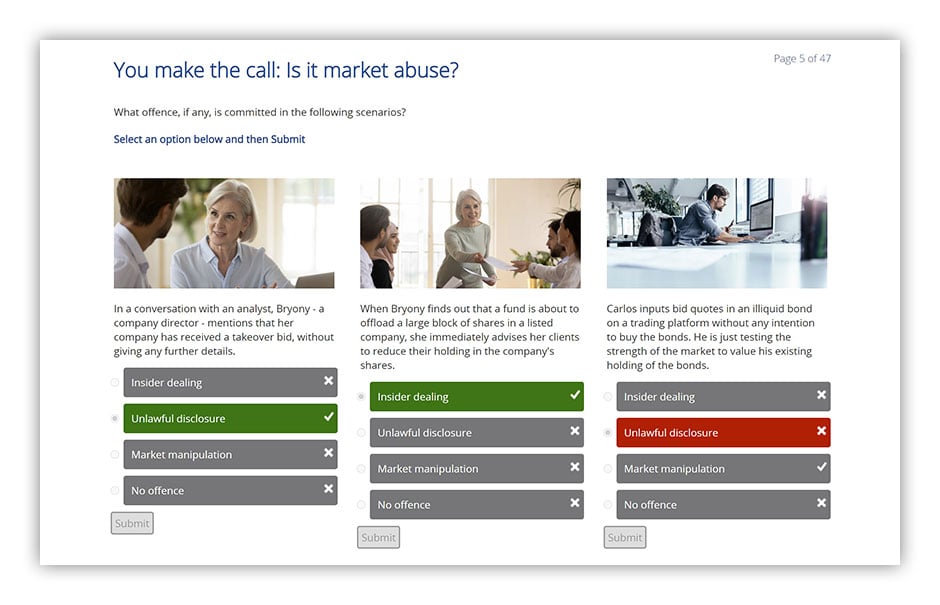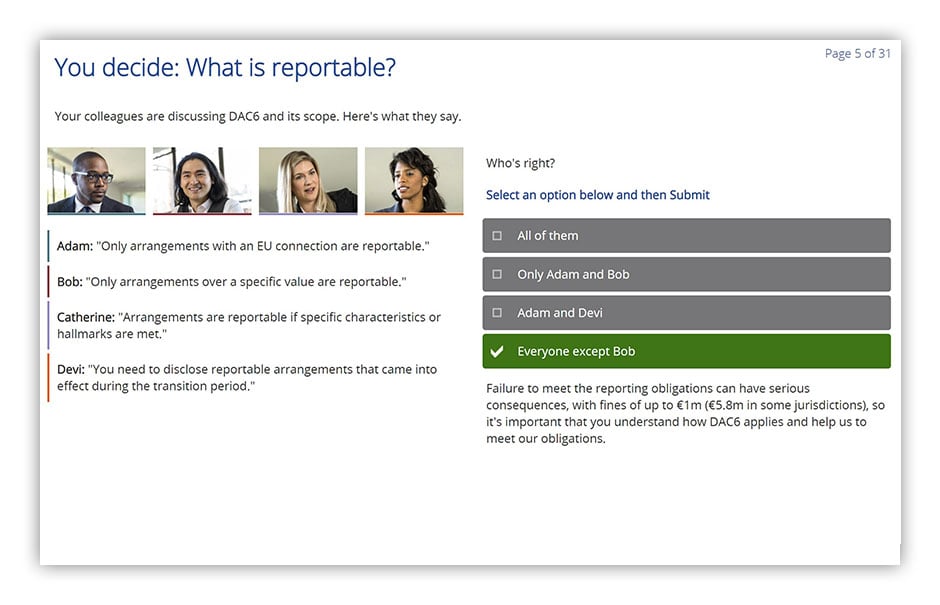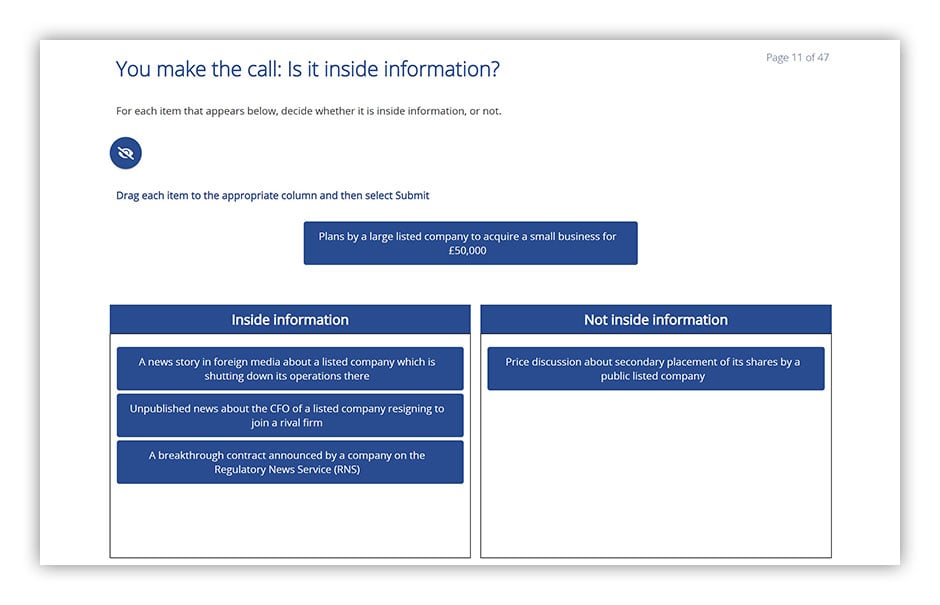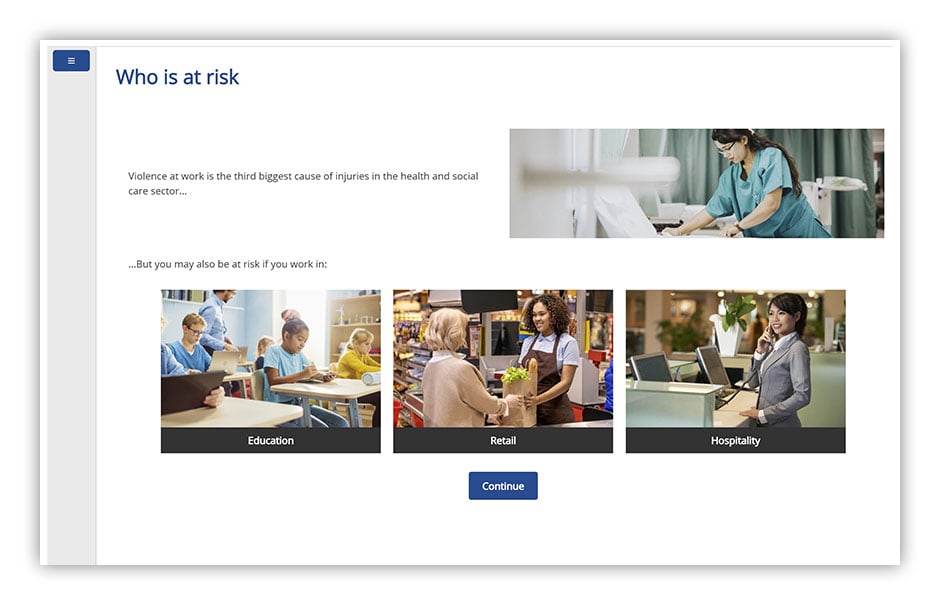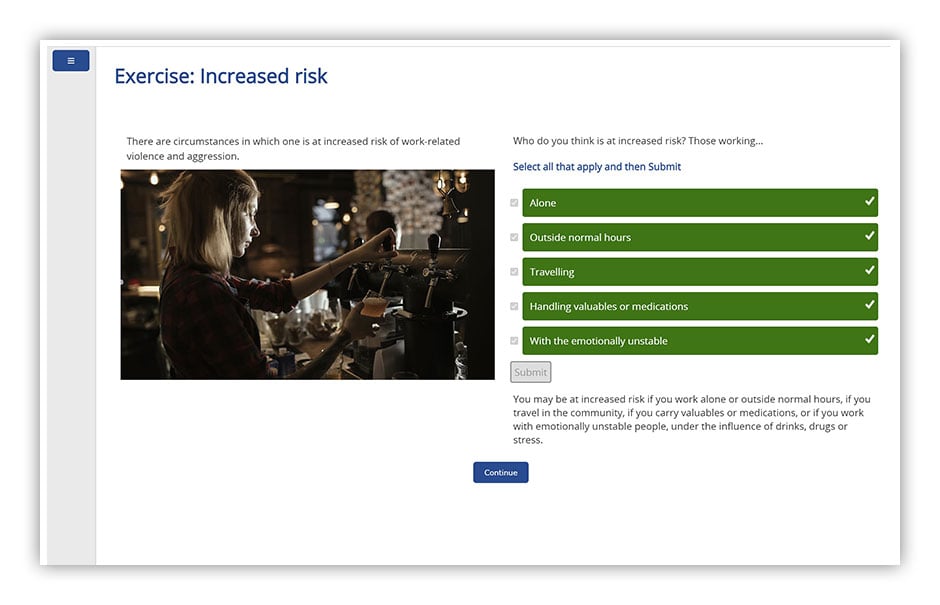Welcome
- Learning objectives
- How to complete this course

Risk treatment refers to when a firm applies risk controls and other strategies in response to risk.
Selecting the most appropriate risk treatment options involves balancing the potential benefits derived from enhancing the achievement of objectives against the costs, efforts or disadvantages involved in the proposed actions.
Our Risk Treatment course will help you learn how to respond to various types of risks and how they can be treated to minimise their negative probability and impact.
.jpg?width=1200&height=627&name=FoR-6_Risk_Treatment_AdobeStock_271154629_1200x627%20(1).jpg)
Available as part of our Risk Management Library.
- Learning objectives
- How to complete this course
- The Management of Risk (M0R) framework
- You decide: Implementing risk controls
Approximately 40-minute long e-learning course followed by a 10-question assessment.
Suitable for all staff - examples and interactivities designed for staff at all levels. No previous knowledge or experience is required.
SHARD-compliant, responsive display on all devices, accessibility on screen readers, visual design controlled via a client style sheet.
All Windows, Mac OSX, iOS, Android (Flash-free for mobile compatibility). AICC and SCORM 1.2-compliant, suitable for both hosted and deployed SCORM or AICC.
Fully customisable on Skillcast Portal CMS.
Pre-translated versions not available, but all text content can be exported for translation into all languages.
Based on best-practice risk management frameworks and suitable for global audiences.
